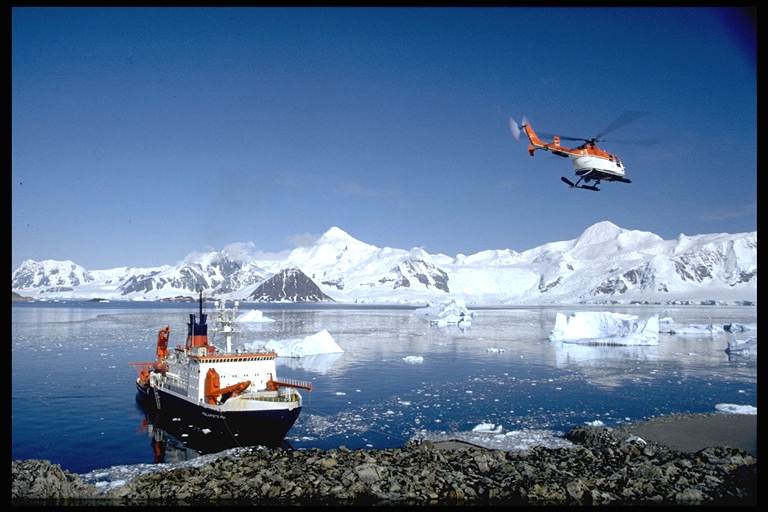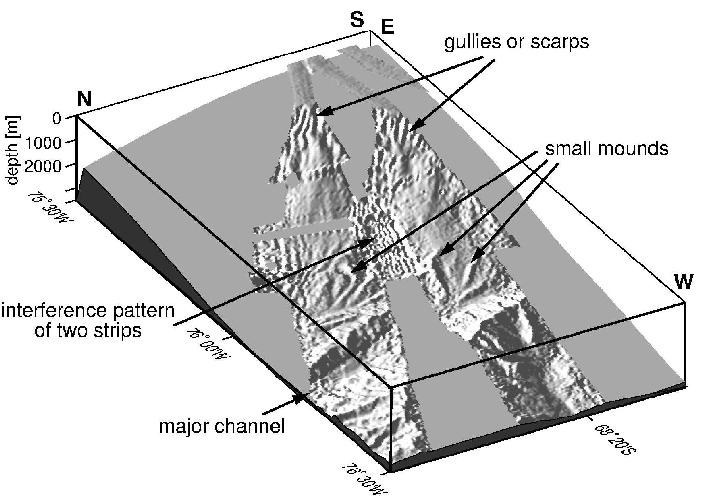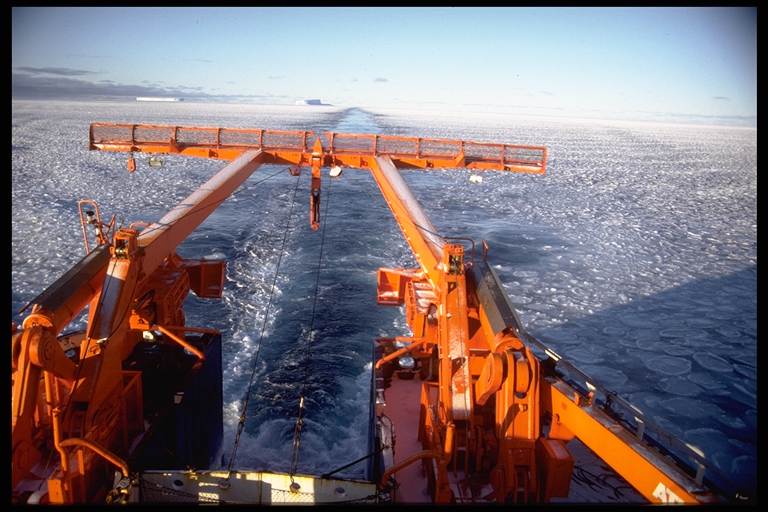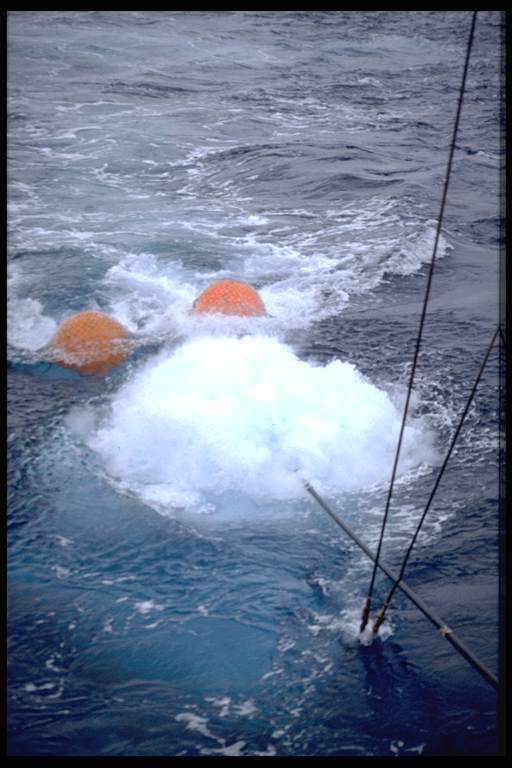Sedimentation processes along the continental margin of the Bellingshausen Sea, West Antarctica

The Bellingshausen and Amundsen Seas is rather remote and poorly surveyed. During two scientific cruises with the German research vessel RV Polarstern we collected several multi-channel seismic reflection profiles as well as bathymetry, magnetic and gravity data.
(s. map)This new information has been combined with published data and used to interpret the style of sedimentation on the continental shelf, slope and rise, and to describe sedimentation processes which have been active in this region.
Most seismic reflection profiles crossing the continental margin show prograded sequences beneath the outer shelf and upper slope, and we infer that the stratal characteristics of these sequences indicate that grounded ice sheets reached the shelf edge during previous glacial times (example).
Although there are general similarities in stratal geometry on these profiles, in detail they reveal significant longitudinal variations in sediment input from the shelf to the upper slope. On several profiles, we found evidence of mass wasting of the continental slope in the form of slump and debris flow deposits. At greater depth, turbidity flows, bottom currents and Coriolis force have controlled the further transportation and deposition of sediment, which has resulted in the development of mounds, channels and sediment wave fields. The distribution, and variations in the size and geometry of the mounds reflects sediment input and the relative contribution of these other factors which control sedimentation on the continental rise. (s. map)
Airgun deployment in the ice.
This work was done as a Ph.D project at the Alfred Wegener Institute for Polar and Marine Research.
Related publications:
- Nitsche, F.O., A. Cunningham, R.D. Larter and K. Gohl., 2000. Sedimentation processes in the Bellingshausen Sea and their variations along the continental margin. Marine Geology, 162, 277-302.
- Nitsche, F.O., K. Gohl, K. Vanneste and H. Miller, 1997. Seismic expression of glacially deposited sequences in the Bellingshausen and Amundsen Seas, West Antarctica. In: P. F. Barker and A. K. Cooper (eds.), Geology and seismic stratigraphy of the Antarctic margin, part 2, Anarctic Research Series, 71. AGU, Washington, D.C., p. 95-108.
In collaboration with:


